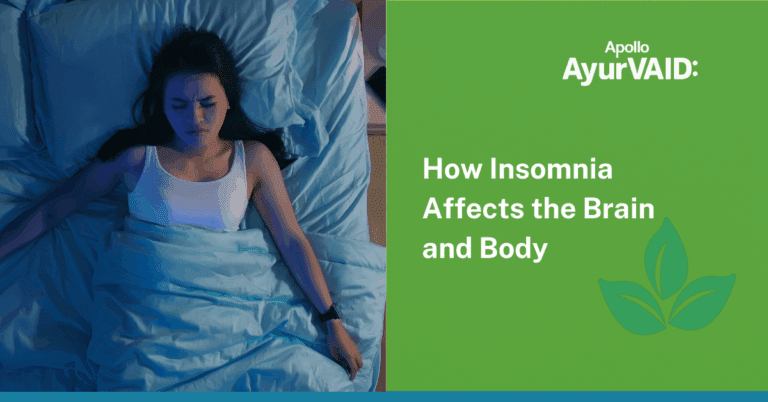Introduction
Most individuals experience hypothyroidism symptoms subtly for the first time—excessive fatigue even after proper rest, dryness of skin, hair thinning or hair fall, constipation, feeling colder than others, or an inexplicable change in weight. The most frequently asked question among individuals is: can hypothyroidism cause weight loss? Although it typically causes slowed metabolism and gradual weight increase, some may experience weight loss, especially if there are other health conditions.
Hypothyroidism arises when the thyroid gland is unable to produce sufficient hormones to govern the metabolism of the body. Hypothyroidism causes include iodine deficiency, autoimmune diseases, drugs, surgical removal of the thyroid gland, stress, and life-style. Ayurveda considers it to be a consequence of impaired Agni, Ama deposition, and Kapha dosha imbalance.
In its initial phase, i.e., subclinical hypothyroidism, symptoms are either not noticeable or subtle, but the condition can start affecting digestion, mood, reproductive system, and overall energy levels if left unrecognised and untreated. Let’s learn in detail about its cause and its connection with weight in this blog.
Hypothyroidism Causes
Hypothyroidism mainly occurs when the thyroid gland secretes inadequate hormone. These hormones are important for proper metabolism. The body slows down when these hormones are absent:
- Weight gain and decreased energy levels
- Changes in cholesterol levels
- Difficulty in processing the sugars, at times leading to insulin resistance
Common symptoms of hypothyroidism include:
- Chronic tiredness or fatigue
- Feeling excessively cold (cold intolerance)
- Dry skin and hair loss
- Constipation
- Progressive weight gain
- Deeper or hoarser voice
- Difficulty with memory and concentration
- Puffy face
- Swelling of the neck (goiter)
- Swelling of the ankles or feet (pedal edema)

Red Flag Symptoms? Seek medical help immediately
- Unintentional or sudden weight loss or weight gain
- Extreme fatigue that limits normal activities
- Noticeable swelling of the neck or difficulty swallowing (may be related to swelling of the thyroid)
- Swelling of the eyelids, hands, or feet that progresses.
- Depressed mood or brain fog
- Irregular periods or issues with fertility.
Timely diagnosis and treatment can manage symptoms effectively or avoid long-term complications.
Hypothyroidism in Ayurveda
Hypothyroidism isn’t named specifically in Ayurveda. Its understanding is derived from correlating clinical manifestations and pathogenesis with Ayurveda principles.
Hypothyroidism causes as per Ayurveda are –
Manda Agni: Weak Agni (both Jatharagni, the digestive fire in the stomach, and Dhatwagni, the tissue metabolic fire) is identified as a main cause. This results in poor digestion and assimilation, which is similar to the low metabolic rate found in contemporary science. Without sufficient Agni (digestive force), the body’s digestion slows down and all metabolic activity falters.
Ama: There is Ama from the weakened Agni from incompletely digested food. Ama is toxic and obstructive, causing sluggishness in the whole system, and blocks all the channels (Srotas). Symptoms of sluggishness, sleepiness, heaviness, poor digestion, constipation, and loss of appetite seen in patients with hypothyroidism are considered Ama lakshanas by Ayurveda.
Dosha Imbalance: Hypothyroidism is caused primarily due to increased Kapha and obstructed Vata dosha. It is the relatively stable characteristics of Kapha (cold, heaviness, slow) that account for the overall decreased metabolic process and most presentations of hypothyroidism symptoms. Vata, when blocked by Kapha (Kaphavruta Vata), also contributes to symptoms associated with dryness, constipation, muscle spasms, and a general achiness. That the thyroid gland is at the throat (Kantha Pradesha) or Kapha area demonstrates the effects upon thyroid health.
Srotas Involvement: Hypothyroidism is viewed as a multifocal disease involving various Srotas (channels) within the body, reflecting an overall issue. The Rasavaha (plasma), Raktavaha (blood), Medovaha, Shukravaha, and Manovaha Srotas are specifically referred to as being abnormal. Obstruction (Srotorodha) and aberrant flow (Vimarga-gamana) in the channels are responsible for the systemic disease manifestations.
Hypothyroidism and Weight Management
Hypothyroidism is frequently linked with weight gain, and Ayurveda can easily account for this. The impaired Agni causes the improper metabolism of nutrients. This leads to the deposition of unprocessed food and deformed Dhatus (tissues), with an increase in the quantity and weight of tissues, especially Meda Dhatu (fat tissue). The dominance of Kapha dosha, with its heavy and stable nature, also adds to this rise in body weight and puffiness. The creation of Ama also inhibits metabolic activities and blocks channels, adding to slowness and weight gain.
Whereas hypothyroidism is generally associated with weight gain, the question can hypothyroidism cause weight loss does occasionally arise. Early weight loss is unusual but may develop in certain unusual instances of untreated or poorly treated hypothyroidism as the body is unable to properly use energy and may become muscle-wasting with a loss of overall body weight. More frequently, during initiation of hypothyroidism therapy with levothyroxine, patients may have a decrease in body weight caused mainly by the loss of excess body water, commonly retained as a consequence of myxedema of severe hypothyroidism. Such post-treatment weight reduction is actually caused more by loss of water than by measurable fat loss.
Subclinical hypothyroidism (SCH), defined by increased TSH levels in the setting of normal free thyroxine (fT4) and free triiodothyronine (fT3) levels, also has an interesting feature. Although frequently asymptomatic, some patients with subclinical hypothyroidism will have nonspecific hypothyroidism symptoms such as fatigue, weight gain, and emotional changes. This disorder is associated with risks for cardiovascular disease and metabolic syndrome, highlighting the insidious but profound influence of even mild thyroid hormone deficiency on weight and well-being.
Ayurveda Hypothyroidism Treatment: A Holistic Approach
Nidana Parivarjana (Avoiding causative factors): Avoiding foods that further increase Kapha dosha and diminish digestive fire such as overconsumption of sweet, sour, and salty flavours; heavy, cold, unctuous, and slimy foodstuffs; a sedentary lifestyle is recommended in Ayurveda. Avoidance of goitrogenic foods like cabbage and soya products and reduction in caffeine and smoking is also beneficial.
Shamana (Internal medicines): Helps to stimulate Agni, digest Ama, and remove obstructed channels. This improves overall metabolic efficiency. Herbal agents such as Trikatu and Panchkola can be used for Deepana, whereas therapies such as Vamana (emesis) and Virechana (purgation) can be used for Srotoshodhana.
Kapha-Vata Shamana: Management aims at soothing imbalanced Kapha and Vata Doshas. Vasti (enema), Udvartana (medicated powder massage) etc can be administered after proper assessment of the patient.
Rasayana Chikitsa: Rejuvenation treatments may reverse free radical generation and stimulate Agni.
Exercises and Stress Management: Physical activity and Pranayama (breathing exercises) are suggested to balance energy, enhance flexibility, minimise stress, and aid metabolism.
Conclusion
Hypothyroidism has become a new age pandemic due to the sedentary lifestyle and irrational food consumption. The condition is in a two-way association with weight gain, forming a loop that leads to other health issues like insulin resistance, cardiovascular hazards. Ayurveda aims to treat the causes of hypothyroidism rather than its symptoms, thus providing efficient treatment for the condition and minimising the likelihood of relapse. By making the correct food choice and lifestyle habits, hypothyroidism can be cured and risks related to it can be prevented as well, leading to a healthier and more vibrant life.






